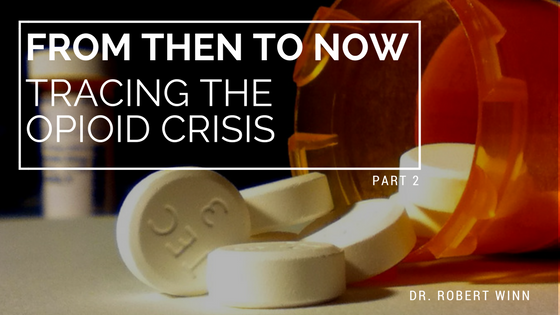Consider this. A young woman is prescribed opioids to manage the chronic pain she faces after a particularly painful car crash. Then, her prescription runs out. This could be due to her doctor wanting her to move onto a different pain management plan, or perhaps to changes in her insurance. But for whatever reason, she finds herself left without the medication she’s become addicted to. So, what does she do? After trying and failing to get a new prescription, she turns to the more dangerous, illegal option: heroin.
Unfortunately, heroin doesn’t have the promise of relative safety that a legally-prescribed drug does. Addicts who shift towards heroin as an alternative to their original opioid prescription have greater access to drugs that have the potential to be significantly more dangerous. Think about this: According to a paper from the National Bureau of Economic Research, “Following the OxyContin reformulation in 2010, abuse of prescription opioid medications and overdose deaths decreased for the first time since 1990. However, this drop coincided with an unprecedented rise in heroin overdoses.” This data heavily implies a linkage between prescription opioids abuse and heroin habits; the former serves as a stepping-stone towards the latter.
But any steps taken towards heroin will land on treacherous ground; in recent years, drugs cut with the synthetic opioid fentanyl have contributed heavily to overdose fatalities. Unlike heroin, which stems from the poppy plant, fentanyl is a chemical synthetic – making it harder to trace. As a drug, it’s considerably more potent than oxycontin or heroin and more dangerous for its intensity. Moreover, because it can easily – and imperceptibly – mixed with powdered heroin or pills, many addicts are unaware of the threat a single dose could pose to their lives.
The risk is real, and lives are at stake. The question is, how will we address the current crisis?
Unfortunately, we cannot simply remove opiates from our hospitals and pharmacies. Drugs such as OxyContin are invaluable to cancer patients and those who need to manage severe chronic pain. Even fentanyl has its use as a painkiller after major surgery. Looking towards the long term, I would argue that we need to turn our focus towards finding alternate ways to manage lesser chronic pain that do not risk addiction. However, we will need to find a way to transition towards these new methods without stripping dependents of their pills and prompting them to manage their pain through more dangerous means.
Our current situation is trickier to handle than future hypotheticals. To keep ourselves afloat amidst the crisis, we will need to distribute the overdose antidote naloxone in quantities high enough to meet emergency needs and declare a state of national emergency to prompt targeted action against the epidemic. Some have posited the idea of offering safe spaces to inject and screen drugs for dangerous additives; however, those measures run the risk of appearing to condone the very substances we need to remove from the streets.
The epidemic is costing lives. I wish I could offer up a solution; some perfect system to prevent fatalities and erase the addiction – but I simply don’t have one. We need to take action and make solving this crisis a priority in every community. Unfortunately, merely watching the crisis unfold isn’t an option; the problem is far too close to home.


